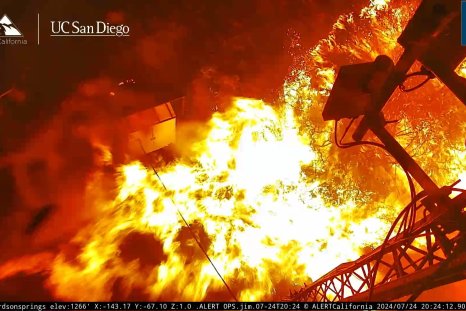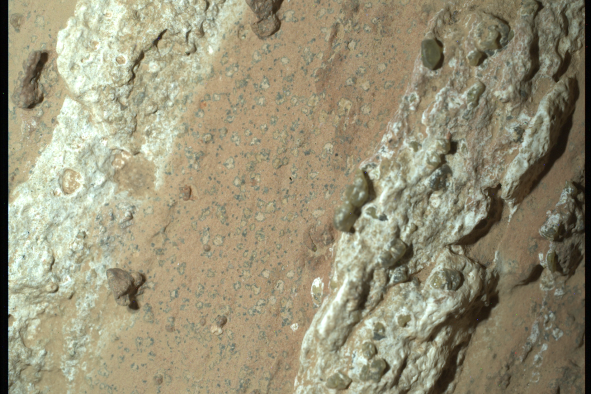Astronomers have discovered a brand new cold "super Jupiter" exoplanet, marking the closest of its kind ever found to us.
The new planet, named Eps Ind Ab, orbits a star called Epsilon Indi A, only about 11.9 light-years away from our solar system, according to a new paper in the journal Nature.
The new exoplanet is thought to be a gas giant about six times the size of Jupiter and orbits its star at a distance about 15 times further away than the Earth's orbit around the sun.
"We were excited when we realized we had imaged this new planet," study co-author Elisabeth Matthews, a researcher at the Max Planck Institute for Astronomy in Germany, said in a statement. "Previous studies had correctly identified a planet in this system but underestimated this super-Jupiter gas giant's mass and orbital separation," she said.
What Is Eps Ind Ab Like?
According to the new paper, the new exoplanet is extremely cold, with temperatures of around 35 degrees F. It is thought to orbit its star at a distance roughly halfway between the orbit of Saturn and Uranus in our own solar system, taking about 200 years to complete a full orbit, and has an oval-shaped, elliptical orbit.
"Astronomers have been imagining planets in this system for decades; fictional planets orbiting Epsilon Indi have been the sites of 'Star Trek' episodes, novels, and video games like Halo," study co-author Caroline Morley, a researcher at the University of Texas at Austin, said in a NASA statement. "It's exciting to actually see a planet there ourselves, and begin to measure its properties."
Data from the planet's atmosphere "indicate an unknown opacity source in the atmosphere, possibly suggesting a high metallicity, high carbon-to-oxygen ratio planet," the researchers wrote in the paper.
This may mean that the planet's atmosphere could have a lot of carbon in the form of CO2 or carbon monoxide, or just that it has lots of clouds.
"Our next goal is to obtain spectra which provide us a detailed fingerprint of the planet's climatology and chemical composition," co-author Thomas Henning, emeritus director at MPIA, said in the statement.
Eps Ind Ab is estimated to have a mass about 6 times that of Jupiter's, making it a type of exoplanet known as a "super Jupiter". This is the 12th closest exoplanet to us ever found, and the closest planet larger than Jupiter.
What Is a "super Jupiter"?
Super Jupiters are a type of exoplanet that have masses exceeding that of Jupiter, typically ranging up to about 13 times Jupiter's mass. Beyond this limit, the planet would start fusing deuterium and be classified as a brown dwarf rather than a planet. These exoplanets are believed to form in a similar manner to Jupiter, through the accumulation of gas and dust in a protoplanetary disk around a young star. However, they managed to gather more material, resulting in their larger size.
While super Jupiters themselves are unlikely to be habitable due to their thick atmospheres and intense gravity, they could have moons that might offer more Earth-like conditions. The environment around these planets could also provide clues about the formation and evolution of planetary systems.
How Did We Find Eps Ind Ab?
Epsilon Indi A, the exoplanet's star, is an orange dwarf, meaning that it is slightly smaller and burns slightly cooler than the Sun. It is one of three stars orbiting each other in a triple-star system, with Epsilon Indi A being demarcated as the primary star in the system, followed by binary brown dwarves Epsilon Indi B and C.
This new exoplanet was discovered using the James Webb Space Telescope, which was investigating Epsilon Indi A due to previous suspicions that the star had a planet orbiting it.
Previous analysis of this system predicted a planet to have certain properties, but the JWST observations show that the planet is fairly different from what we expected, meaning that this planet is considered new.
"While we expected to image a planet in this system, because there were radial velocity indications of its presence, the planet we found isn't what we had predicted," said Matthews. "It's about twice as massive, a little farther from its star, and has a different orbit than we expected. The cause of this discrepancy remains an open question. The atmosphere of the planet also appears to be a little different than the model predictions. So far we only have a few photometric measurements of the atmosphere, meaning that it is hard to draw conclusions, but the planet is fainter than expected at shorter wavelengths."
To confirm that the signal was indeed a planet, astronomers had to rule out that it was something else being detected.
"It is always hard to be certain, but from the data, it seemed quite unlikely the signal was coming from an extragalactic background source," study co-author Leindert Boogaard, also a researcher at MPIA, said in the statement.
Only a handful of cold gas-giant planets have ever been found orbiting stars of a similar age to our sun.
"This discovery is exciting because the planet is quite similar to Jupiter — it is a little warmer and is more massive, but is more similar to Jupiter than any other planet that has been imaged so far," Matthews said.
The researchers hope this discovery will pave the way to finding more planets like this one lurking in the cosmos.
"In the long run, we hope to also observe other nearby planetary systems to hunt for cold gas giants that may have escaped detection," said Matthews. "Such a survey would serve as the basis for a better understanding of how gas planets form and evolve."
Do you have a tip on a science story that Newsweek should be covering? Do you have a question about exoplanets? Let us know via science@newsweek.com.
Disclaimer: The copyright of this article belongs to the original author. Reposting this article is solely for the purpose of information dissemination and does not constitute any investment advice. If there is any infringement, please contact us immediately. We will make corrections or deletions as necessary. Thank you.



